Recent Articles
Popular Makes
Body Types
10 Things You Should Know About the 2021 Toyota Camry Hybrid
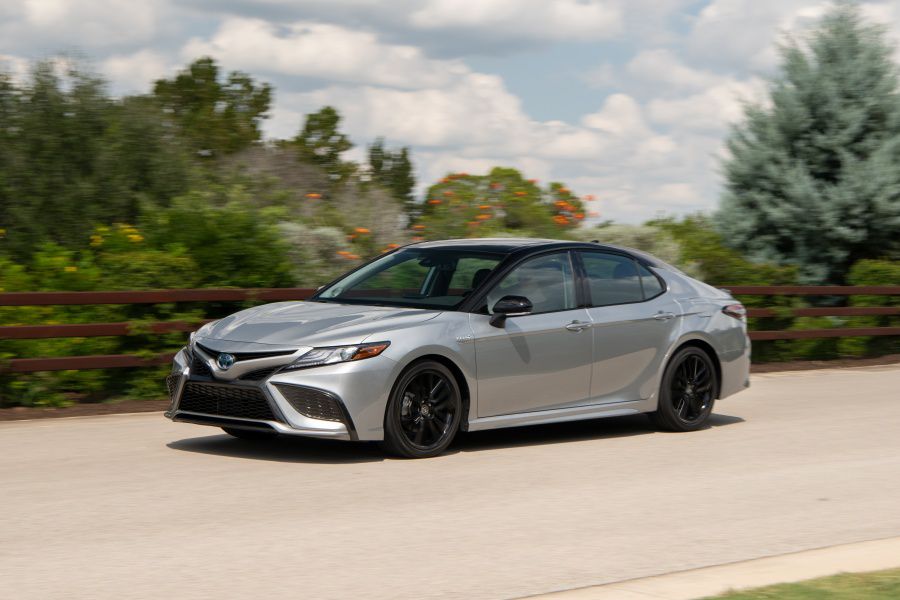
2021 Toyota Camry XSE Hybrid ・ Photo by Toyota
The Toyota Camry is an easy car to like. This mid-size sedan is comfortable, quiet, relatively affordable, and surprisingly economical. And although it sometimes has a stereotype as being cushy yet deadly dull, the latest Camry is both sharp-looking and agreeably agile.
But there’s a way to improve the Camry further, and that’s by choosing the hybrid model. While you might think of hybrids as small, slow, unusual-looking cars like the iconic Toyota Prius, the Camry Hybrid has most of the same benefits — but in the roomier, more refined, more conventional-looking Camry package. Here are 10 things you should know about the 2021 Toyota Camry Hybrid.
1. It has a gasoline engine and an electric motor.
The Camry Hybrid has the same engineering idea as the Prius and Toyota’s many other hybrids. It has both a gasoline engine and an electric motor, which improves fuel economy. In this case, the Camry Hybrid combines a 176-horsepower 2.5-liter four-cylinder engine with a 118-horsepower electric motor. When they’re working together, the net effect is a 208-horsepower vehicle. That’s plenty powerful for a mid-size sedan, and that’s more horsepower than the base Camry four-cylinder (which makes 202 horsepower).
Here’s how it works: An onboard battery powers the electric motor, which can either help the gasoline engine accelerate or take over entirely when you’re cruising or accelerating very gently. This electric motor can either take over some of the acceleration effort from the gas engine, making it burn less gasoline. And when you’re coasting, braking, or even accelerating very gently, the engine can switch off entirely at times — letting you get around gas-free (and emissions-free) in those cases. A selectable EV (electric vehicle) mode lets you accelerate a little harder without the gas engine if your battery has enough charge.
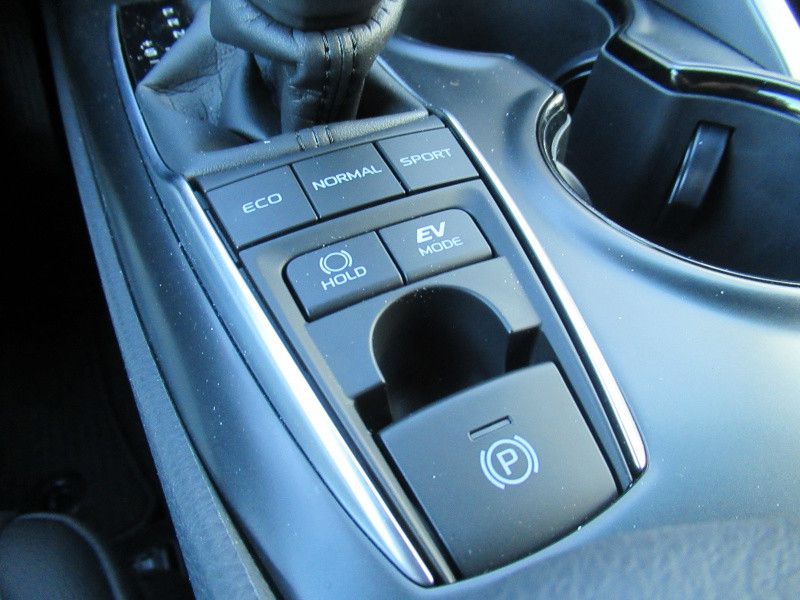
Photo by Brady Holt
2. You don't plug it in.
Unlike an electric car or a plug-in hybrid, you never plug in the Camry Hybrid. Instead, the gasoline engine recharges the electric motor’s battery whenever it’s running. And through a process called regenerative braking, the battery also can charge by converting braking friction into electricity.
Never having to plug in the Camry Hybrid will be a welcome convenience for many buyers. That said, others will wish for the additional zero-emissions range that plug-in hybrid electric vehicles (PHEVs) can provide. They have bigger batteries that let you drive using no electricity even at highway speeds for 20 miles or more. While several mid-size sedans used to be available as plug-in hybrids, there’s just one such model today: the Honda Clarity PHEV. This comfortable, futuristic-looking sedan can travel a whopping 47 miles on electricity before its gasoline engine ever needs to switch on. If you prefer a Toyota, the company offers PHEV versions of the Prius hatchback and RAV4 SUV called the Prius Prime and RAV4 Prime, but there’s no equivalent Camry Prime.
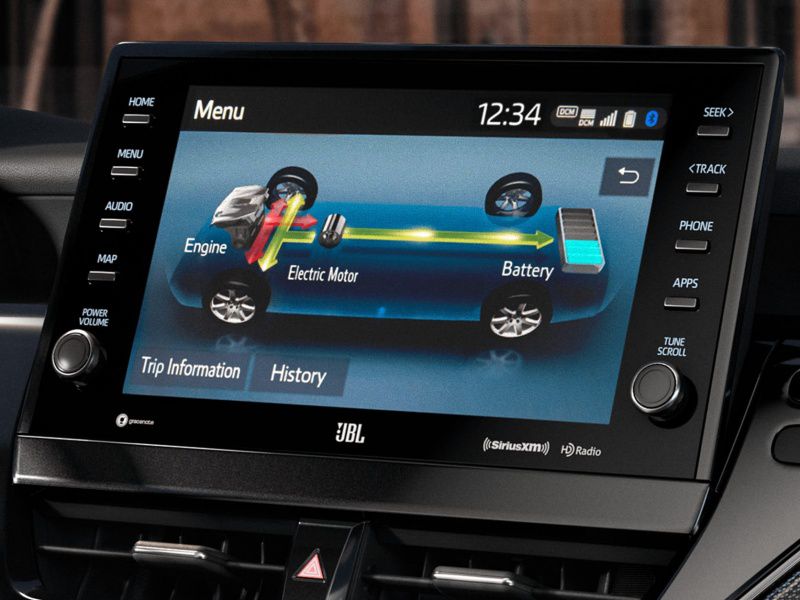
Photo by Toyota
3. It can get more than 50 mpg.
Even if you nearly always burn some gasoline in the 2021 Toyota Camry Hybrid, you don’t burn very much of it. In EPA testing, the base Camry Hybrid LE achieves class-leading scores of 51 mpg in the city and 53 mpg on the highway. Other trim levels, which weigh more and have a different battery design, slip to a still-remarkable 44 mpg in the city and 47 mpg on the highway.
We tested the SE model, which has those lower EPA scores, and we averaged 44 mpg in a week of mixed driving. But when we drove at lower speeds, we easily coaxed this Camry Hybrid well past 50 mpg, too. In comparison, the gas-only Camry sedan is rated for 28 mpg in the city and 39 mpg on the highway.
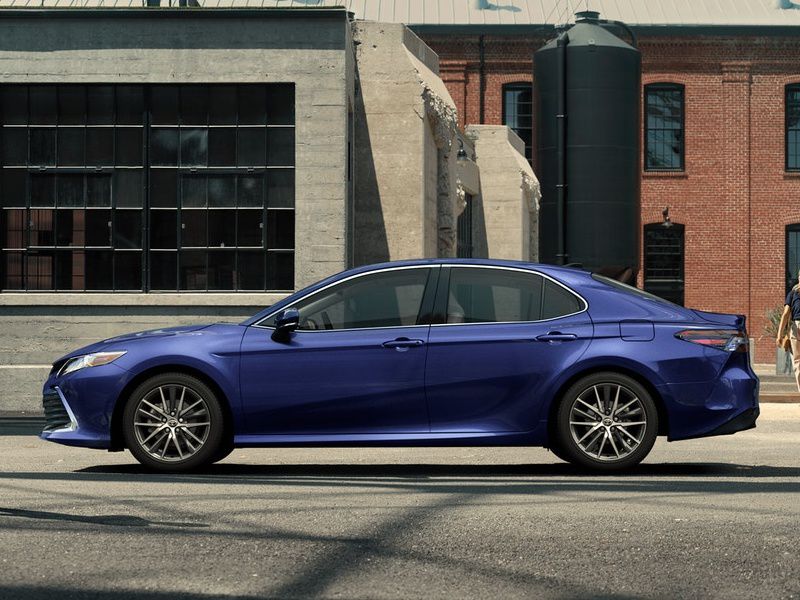
Photo by Toyota
4. It's nice to drive, too.
We previewed this when we quoted the Camry Hybrid’s 208-horsepower rating, but this is a nice car to drive. In contrast with the Prius, which is designed to optimize fuel economy at the expense of acceleration and a quiet ride, the Camry Hybrid feels almost like a luxury car. The gas engine isn’t hushed when you accelerate hard, true, but it’s nothing too objectionable. Besides, this isn’t a car that’s built for folks who intend to floor the gas pedal all the time.
Like the regular Camry, today’s Camry Hybrid has an agreeable balance of a cushy ride and respectable handling agility. While it doesn’t have the extra-buttoned-down feel of the competing Honda Accord Hybrid, this is an agile sedan that lets you tackle a winding road with a smile on your face. And it’s serene on the highway. Buyers can choose between two flavors of Camry Hybrid: the slightly smoother LE and XLE, and the slightly sportier SE and XSE. There are subtle differences to the suspension tuning as well as some styling tweaks, but the overall experience is similar whichever model you choose.
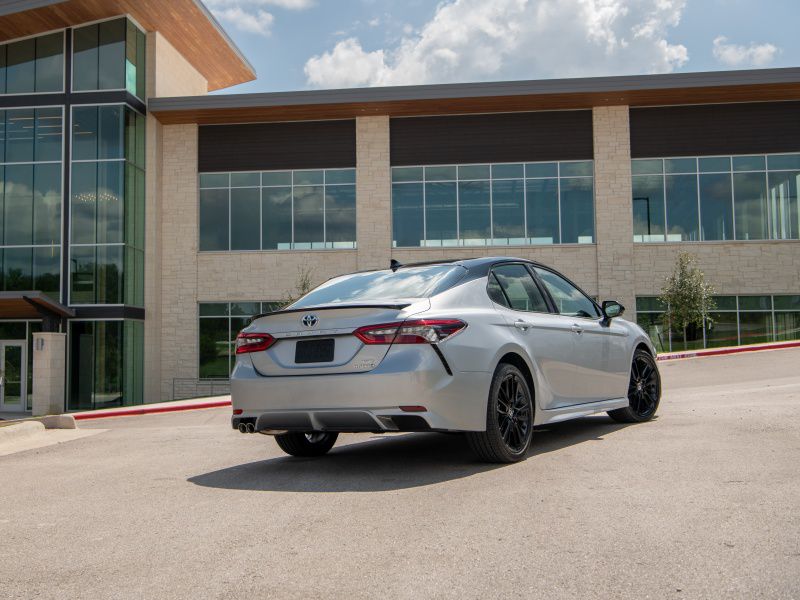
Photo by Toyota
5. The Hybrid costs $2,300 more than a gas-only Camry.
No matter which trim level you choose, the 2021 Toyota Camry Hybrid costs $2,300 more than an equivalently equipped gas-only four-cylinder Camry. Whether that’s a financially worthwhile investment will depend on the individual driver.
If you’ll spend a lot of time in stop-and-go conditions, you may slip below the gas Camry’s 28 mpg city estimate, yet you should exceed the Camry Hybrid’s 44 mpg or 51 mpg city rating. That means you’d be burning half the gasoline, which can add up to significant fuel savings over time. But if you mostly take road trips on empty freeways, our experience suggests you’ll beat the EPA’s 39 mpg estimate for the gas Camry and miss the hybrid’s rating of 47 to 53 mpg. That’s because gas cars are quite efficient on the highway already, and there’s less opportunity for the electric motor to help out — making it harder to recoup the price difference. The same is true if you only drive a few thousand miles per year; if you don’t spend much on gas anyway, there’s not much room for savings.
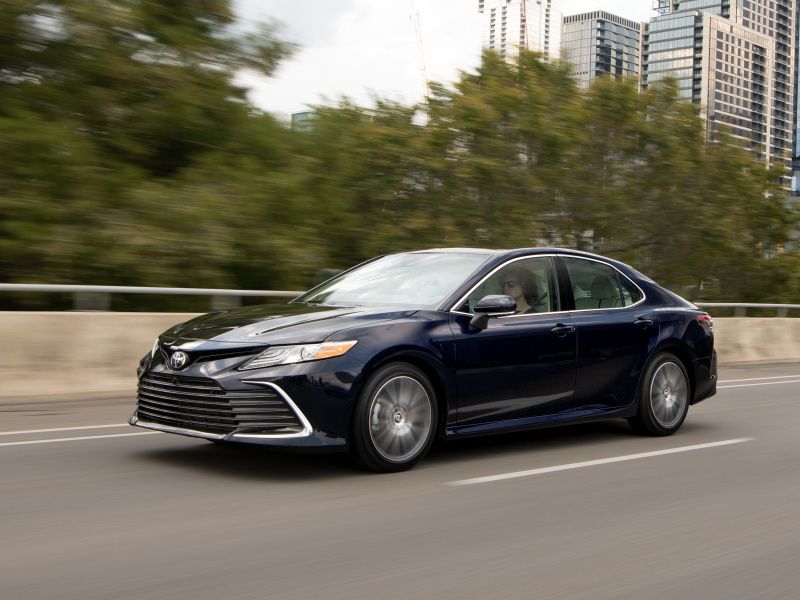
Photo by Toyota
6. This year introduces revised styling and a new XSE version.
For the 2021 model year, every Camry got a slight styling update. The LE and XLE models got a slightly simpler grille, slightly smaller bumper openings, and a touch of front-end chrome. The SE and XSE instead get slightly larger bumper openings.
The bigger change for the Camry Hybrid is that the gas Camry’s XSE trim level is newly available with the gas/electric powertrain. This trim level combines the luxury equipment of the XLE with the sportier style and handling of the SE. It’s a natural addition to the lineup that should prove popular.
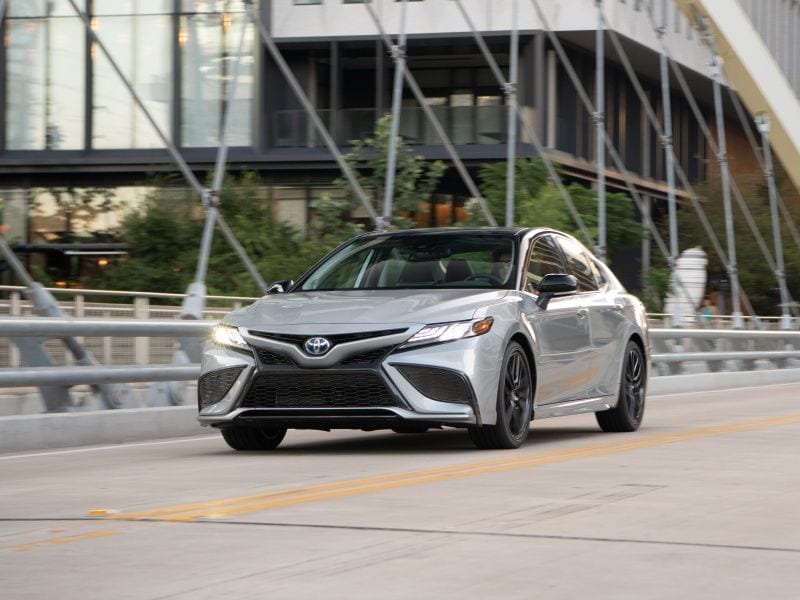
Photo by Toyota
7. Upgrade to a bigger infotainment screen.
This year also brought a revised interior, which moves the touchscreen infotainment system higher on the dashboard. This approach puts the screen more in the driver’s line of sight, and it made room for the newly available 9-inch system — an inch bigger than the largest screen on last year’s Camry Hybrid. Like last year, a 7-inch touchscreen is standard equipment, but it shares the new raised position.
Whichever screen you pick, the Camry Hybrid provides Android Auto, Apple CarPlay, and Amazon Alexa integration, along with Bluetooth connectivity and a built-in Wi-Fi hotspot. While we’re talking about technology, note that every Camry also comes standard with advanced safety features, including automatic emergency braking with pedestrian and bicyclist detection, lane-keep assist, adaptive cruise control, and automatic high beams. Blind-spot monitoring with a rear cross-traffic alert is optional or standard on all trim levels.
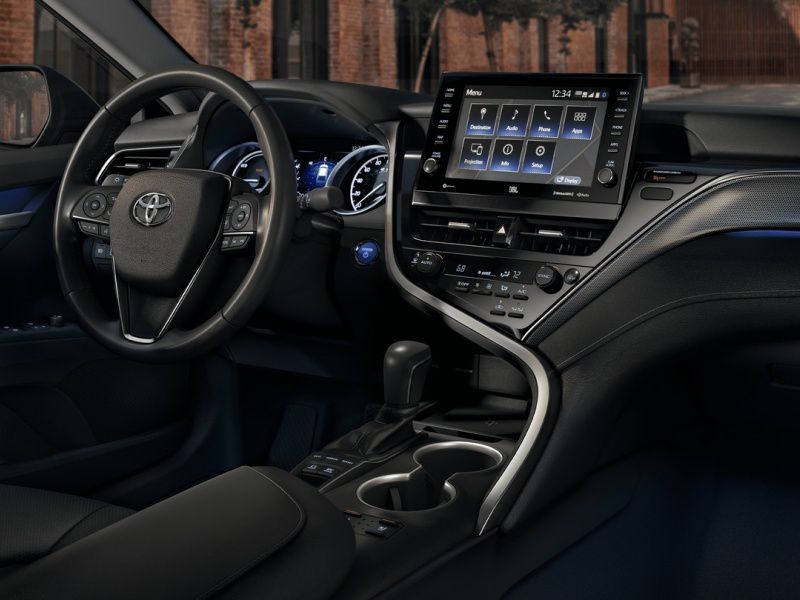
Photo by Toyota
8. The interior has cushy, supportive seats.
We’ve always loved sitting in the current Camry’s interior, and the hybrid model is no exception. Whether you sit in the front or the back, seats are a great mix of being supportive yet neither too hard nor too confining. You can find competitors with even more rear legroom, but there’s little reason to complain even here.
We also like the upholstery in the relatively affordable SE model. Toyota provides an attractive and functional mix of leatherette and cloth upholstery: leatherette bolstering on the sides for flashier looks, with cloth in the middle so things aren’t too slippery. Full genuine leather seating is included on the XLE and XSE.
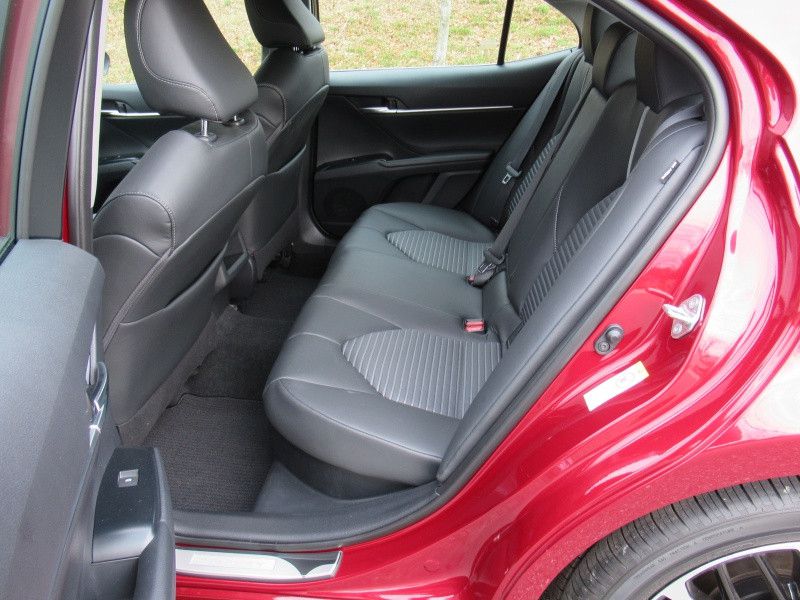
Photo by Brady Holt
9. The hybrid doesn't give up any trunk space.
Unlike the pre-2018 Toyota Camry Hybrid and several other older hybrids, today’s Camry Hybrid has just as much trunk space as its gas-only counterpart: 15.1 cubic feet. Older hybrids put their electric batteries in the trunk, leaving less space for luggage. Instead, Toyota fits this Camry Hybrid’s battery under the rear seat.
That said, the competing Honda Accord Hybrid and Hyundai Sonata Hybrid accomplish the same trick, and they have bigger trunks as starting points than the Camry.
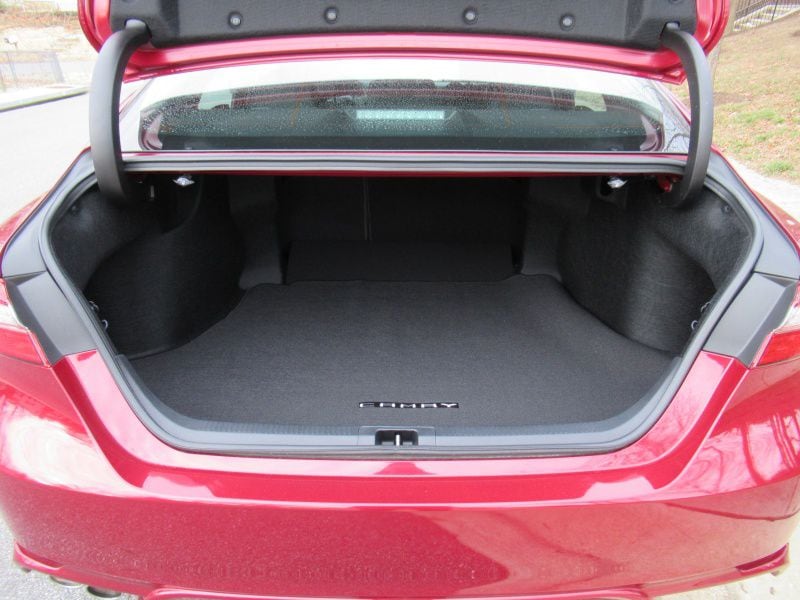
Photo by Brady Holt
10. The Camry Hybrid has some great competitors.
We’ve mentioned them a couple of times on previous pages, but let’s talk more about the Camry Hybrid’s competitors. We recently published a full comparison against the Honda Accord Hybrid, which favored the Honda for superior driving performance but the Toyota for cushier comfort and slightly better fuel economy.
Meanwhile, the Hyundai Sonata Hybrid tops both sedans for luxury and in-cabin technology, and we also observed better real-world fuel economy in our non-scientific testeing. The Camry Hybrid’s cushier seats and a slightly smoother ride are appealing, though, and you’ll be disappointed if you thought a Hyundai would be cheap. You can read our full review of the Sonata Hybrid here.
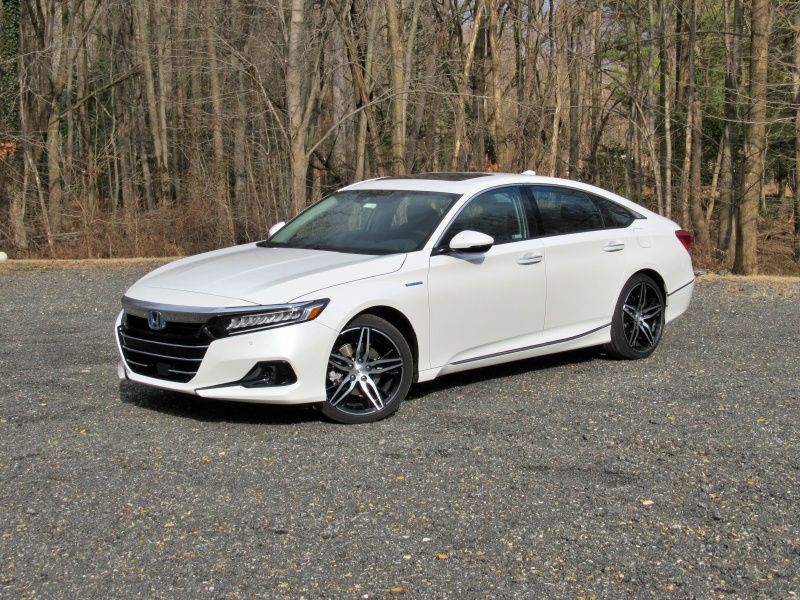
Photo by Brady Holt